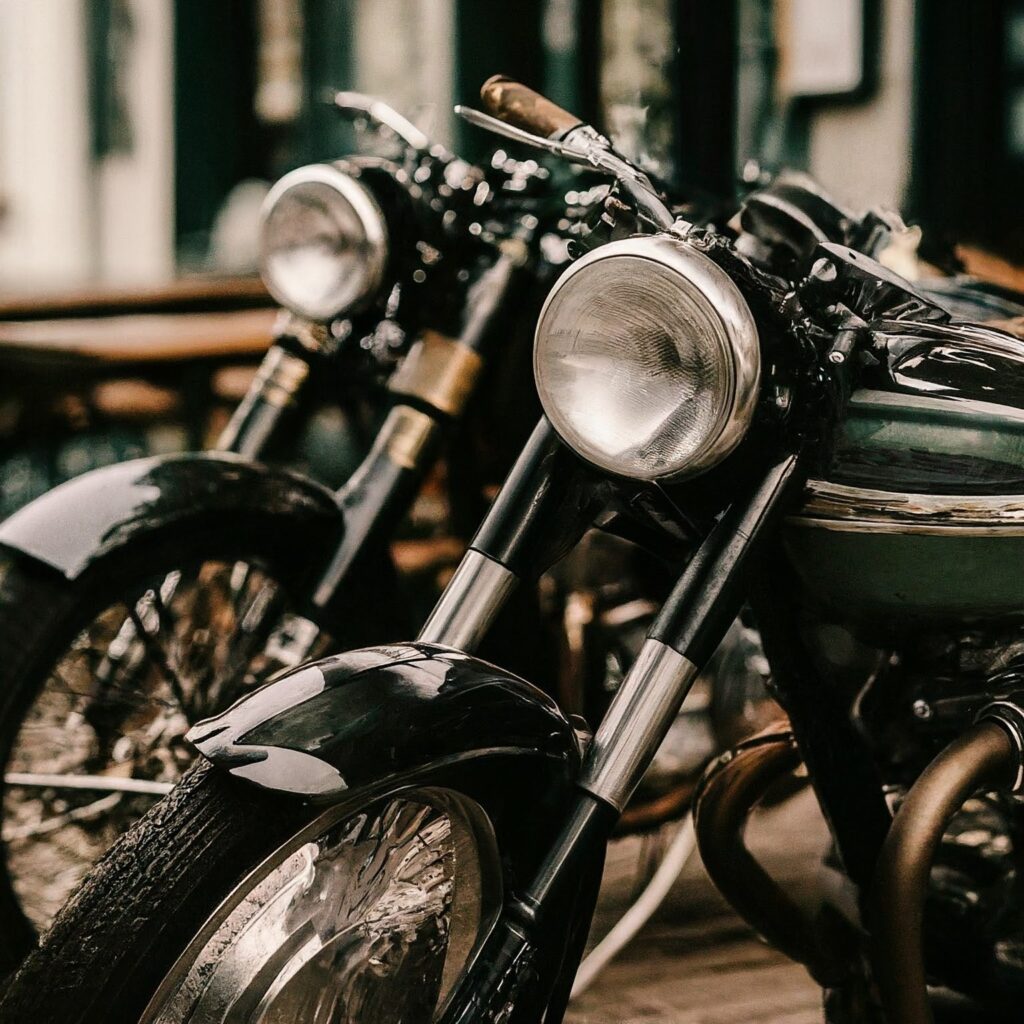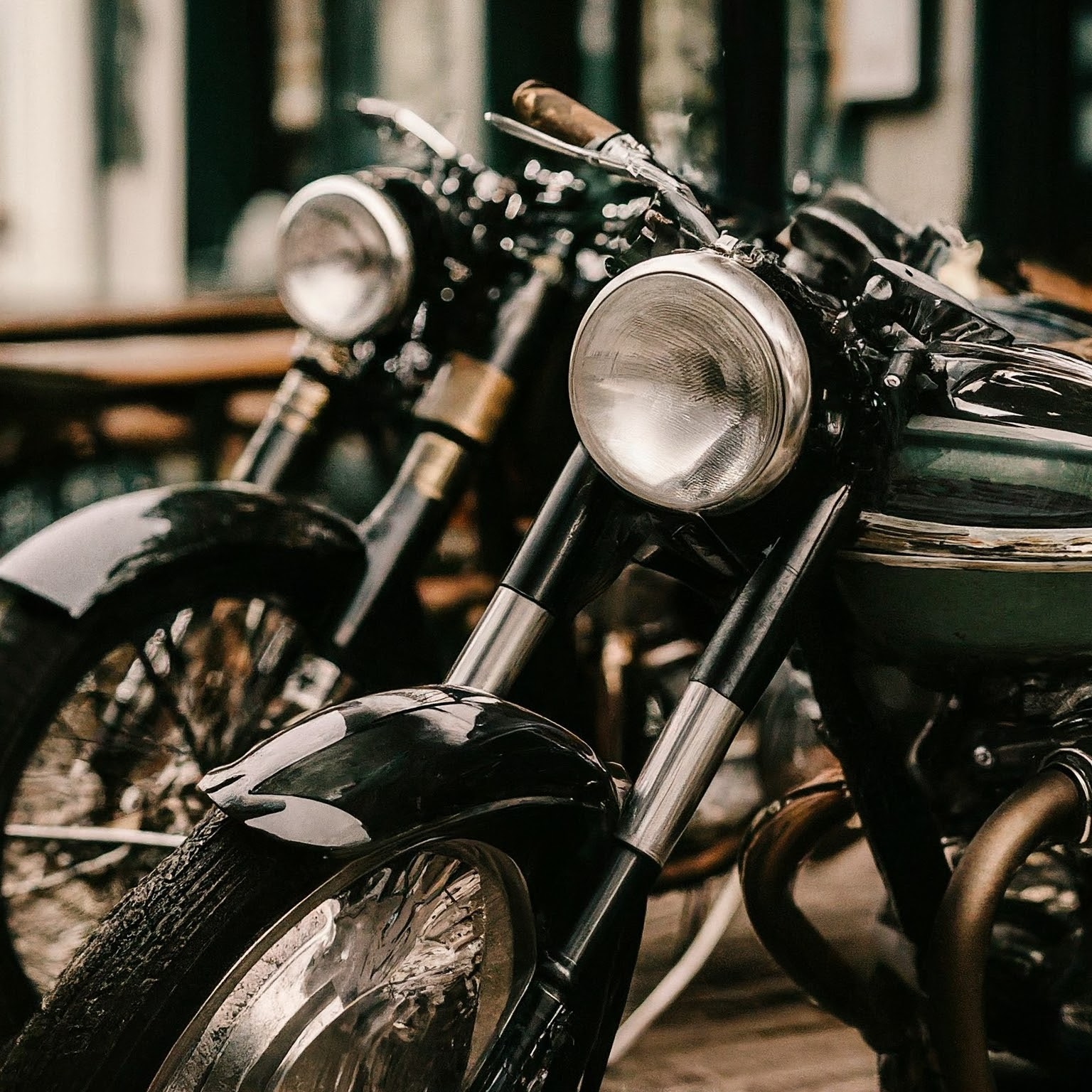
The motorcycle’s origins can be traced back to the late 19th century, a period of intense experimentation with self-propelled vehicles. While several inventors contributed to the early development of motorized bicycles, the Daimler Reitwagen, built in 1885 by Gottlieb Daimler and Wilhelm Maybach in Germany, is widely considered the first true motorcycle. This pioneering machine featured a single-cylinder engine mounted in a wooden frame and achieved a top speed of around 11 mph.
Simultaneously, other inventors were exploring similar concepts. In 1894, Hildebrand & Wolfmüller became the first motorcycle to enter series production. These early motorcycles were largely experimental, but they laid the foundation for future development and sparked interest in personal motorized transportation.
Early 20th Century Growth and Innovation
The early 20th century witnessed significant advancements in motorcycle technology and design. Companies like Triumph (UK), Indian, and Harley-Davidson (USA) emerged as dominant players, pioneering innovations such as improved engines, suspension systems, and frame designs. Motorcycle racing became increasingly popular, driving innovation and showcasing the capabilities of these machines.
Check out this link for Summer Road Trip Essentials at J&P Cycles!
The First World War spurred motorcycle production as they were used for messenger services and reconnaissance. The interwar period saw the rise of iconic motorcycle designs, like the Harley-Davidson Knucklehead, as well as the popularization of sidecars. In Europe, brands like BMW focused on engineering and reliability, creating touring bikes suited to the expanding road network.
Post-War Boom and Diversification
The post-World War II era saw a massive surge in motorcycle popularity, fueled by economic growth and a desire for affordable transportation. European manufacturers, particularly in Italy (e.g., Vespa, Lambretta, Ducati), introduced lightweight scooters and motorcycles that appealed to a wide audience. In Japan, companies like Honda, Yamaha, Suzuki, and Kawasaki began their ascent, initially producing small-displacement motorcycles before expanding into larger, more powerful machines.
This era also saw diversification in motorcycle styles. The British motorcycle industry, though facing challenges, produced classic roadsters and cafe racers. American manufacturers focused on larger, more powerful cruisers. The Japanese manufacturers started to dominate with mass production and technologically advanced machines. Off-road motorcycles also gained popularity, giving rise to motocross and enduro racing.
The Rise of Japanese Dominance
The 1970s and 1980s marked the rise of Japanese motorcycles to global prominence. Japanese manufacturers offered reliable, technologically advanced, and competitively priced motorcycles that outperformed their European and American counterparts. The introduction of inline-four engines, disc brakes, and advanced suspension systems revolutionized the industry.
Get $50 off Riding Culture CE Tapered Slim Jeans at J&P Cycles!
Models like the Honda CB750 set new standards for performance and reliability. Japanese manufacturers also excelled in producing a wide range of motorcycle styles, from sportbikes to cruisers to off-road machines, catering to diverse rider preferences. This period saw a decline in the British motorcycle industry and significant challenges for American manufacturers as they struggled to compete with the Japanese giants. However, Harley Davidson managed to survive, focusing on their core brand image and customer loyalty.
Modern Motorcycles: Technology and Segmentation
The late 20th and early 21st centuries have seen continuous advancements in motorcycle technology. Fuel injection, electronic engine management systems, ABS, traction control, and advanced materials have become commonplace. Motorcycle design has also become increasingly segmented, with manufacturers offering specialized models for specific purposes, such as sportbikes, touring bikes, adventure bikes, cruisers, and electric motorcycles.
The emergence of electric motorcycles represents a significant shift in the industry, driven by environmental concerns and advancements in battery technology. Companies like Zero Motorcycles and LiveWire (Harley-Davidson) are pioneering the development of high-performance electric motorcycles. At the same time, classic brands are being revived and new manufacturers are emerging, leading to an increasingly diverse and competitive market. The motorcycle continues to evolve, adapting to changing rider needs and technological advancements.
Cultural Impact and Subcultures
Motorcycles have had a profound cultural impact, shaping subcultures and influencing art, literature, and film. Motorcycle clubs, like the Hells Angels, have become iconic symbols of rebellion and freedom. Movies like “Easy Rider” and “The Wild One” have romanticized the motorcycle lifestyle.
Motorcycles have also played a significant role in various forms of motorsport, from MotoGP to motocross to land speed records. They have become symbols of personal expression and adventure, offering riders a unique sense of freedom and connection to the open road. The cultural impact of motorcycles is evident in the countless rallies, events, and communities that celebrate the motorcycle lifestyle around the world.
Global Perspectives
Asia:
Motorcycles are a primary mode of transport in many Asian countries, like Vietnam and Indonesia. Scooters and small displacement motorcycles dominate due to affordability and practicality in dense urban environments. Local manufacturers contribute significantly to the market, offering a variety of models to meet diverse needs.
Europe:
Europe has a rich motorcycle heritage, with many iconic brands originating from countries like: Italy, Germany, and the UK. The European market favors a diverse array of motorcycle types, from high-performance sport bikes to long-distance touring machines. Regulations and emissions standards play a significant role in shaping motorcycle design and technology.
North America:
The North American market is characterized by a strong preference for large displacement cruisers and touring motorcycles versus smaller motorcycles. Harley-Davidson holds a dominant position in the US, appealing to riders who value tradition and American motorcycle culture. The market also sees growing interest in adventure bikes and sport bikes.
Latin America:
Motorcycles are a vital mode of transport in Latin America, particularly in urban areas. Affordability and fuel efficiency are key factors driving motorcycle sales. The market is mostly smaller displacement motorcycles and scooters, primarily used for commuting and commercial purposes.
Conclusion: The Enduring Legacy
From its humble beginnings as a motorized bicycle to its current status as a sophisticated and diverse mode of transportation, the motorcycle has undergone a remarkable evolution. Its impact on culture, technology, and personal mobility is undeniable. As technology continues to advance and rider preferences evolve, the motorcycle is sure to remain an enduring symbol of freedom, adventure, and personal expression for generations to come. The journey continues…
